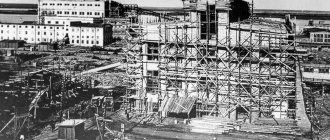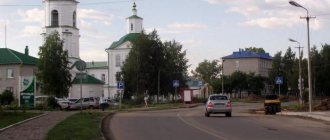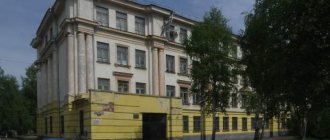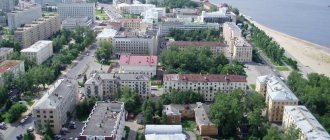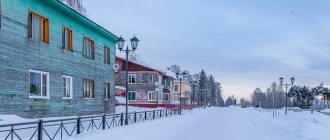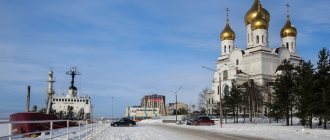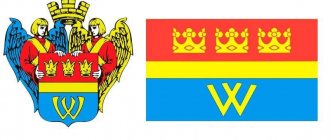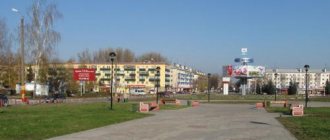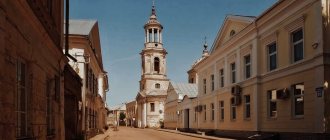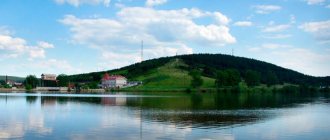The Arkhangelsk region is known for its beautiful, albeit harsh, nature of the tundra and taiga, ancient and mysterious archaeological sites, some of which are up to 4 thousand years old, unique examples of ancient wooden architecture, beautiful temples and monasteries, stunning cave complexes, nature reserves and national parks.
It is in these places that you can enjoy the pristine nature of the north, wander through dense forests, fish in numerous clean rivers and lakes, and see many rare animals in their natural habitat. At the same time, the Arkhangelsk region is a real Orthodox center of Siberia, on the territory of which there is simply a huge number of churches, temples, cathedrals, chapels, monasteries and other religious buildings.
Solovetsky Islands
The most famous archipelago in the Arkhangelsk region and throughout Russia is the Solovetsky Islands, located in the western part of the White Sea. The main attraction of Solovki is the impressive Solovetsky Monastery, built in these places in the 15th century, which became the spiritual center of Pomerania and the strongest fortress of Russia on the northern borders. The islands and the monastery became notorious during the Tsarist and Soviet times, when they were used as a high-security state prison.
At the same time, Solovki is home to more than 1,000 archaeological complexes, including a large pagan sanctuary, religious and burial structures of the 2nd-1st millennium BC, about 30 labyrinths and more than 1,100 other stone structures. The most famous historical monuments of Solovki are the dam on Bolshoi Solovetsky Island, the Filippov Gardens, the lake-canal system of islands, and the Botanical Garden with more than 500 species of plants. The main attractions of Solovki are included in the UNESCO World Heritage List.
Lomonosov Museum
The museum in the village of Lomonosovo (located east of Kholmogory) was built in 1892 and opened in 1940. Previously, this was the estate where the scientist was born. As a result, many exhibits remained that are associated with his childhood and youth. Some rarities had to be restored, others had to be completely restored, but some remained in good condition.
But the village is also the birthplace of the sculptor Shubin and the outstanding physicist Golovin. The museum complex includes a conference hall and exhibition pavilions. They show exhibits carved from mammoth tusks and walrus bones. The craftsmen used ancient openwork techniques.
Solovetsky Monastery
The first Christian preachers came to these harsh but beautiful places in the 12th-13th centuries; the first monastic settlement was founded on the archipelago in 1426. By 1554, the Solovetsky Monastery had already been strengthened to the size of a stone fortress - a powerful wall was erected on the Big Island. For almost 2 centuries the monastery successfully resisted attacks from warlike neighbors.
At the beginning of the 20th century. this place became a major religious center with schools, a rich economy and a small fleet. In 1920, after the closure of the monastery, a state farm was organized on its territory, and 3 years later - the Solovetsky special-purpose camp, which existed for 10 years. During this time, more than 5,000 prisoners were executed on the islands, and many famous people served their sentences in these places. The historical and cultural value of the monastery’s heritage was assessed by the government only in the 60s, and already in 1992 the Solovetsky Historical and Cultural Ensemble in the Arkhangelsk Region was included in the UNESCO World Heritage List.
Sights of Arkhangelsk
Arkhangelsk Literary Museum
The Literary Museum may well bear the proud title of the first literary museum in the Russian North.
Starting in 1995, the Arkhangelsk Literary Museum, affiliated with the regional organization of the Voluntary Society of Book Lovers, has come to this day with a huge baggage of interesting exhibitions and hundreds of thousands of unique storage units. Surprisingly, this is where the personal archives of the direct descendants of Alexander Sergeevich Pushkin and many books with autographs and notes of the great poet are kept.
Photo source: bulatova.travel
Visitors can see with their own eyes Arkady Gaidar’s favorite pipe and diaries with drafts that belonged to Boris Shergin, the manuscript of Fyodor Abramovich “Two Winters and Three Summers,” the manuscripts of Vladimir Lichutin, and an antique sofa that belonged to Ioann Sergiev (Krontadtsky).
Every year, for many years, the museum celebrates memorable dates of great writers whose name is associated with the Russian North, which ends with tea drinking at the samovar with traditional northern pies.
Distance to center: 1.71 km. GPS coordinates: N 64° 32′ 3.6132″ E 40° 31′ 49.3968″ Address: 163000, Russia, Arkhangelsk region, Arkhangelsk, st. Volodarskogo, 10 Tel.: +7
Arkhangelsk Marine-River Station
In fact, the Arkhangelsk Sea and River Station has a history of almost four hundred years. But the official opening of the current building occurred in 1972. By the way, the station premises are designed in the shape of a ship and are depicted on the banknote, along with other sights of the Arkhangelsk region - 500 Russian rubles.
Author Harlovo72, https://fotoload.ru/
Arkhangelsk Station is not just a historical and architectural landmark, but also a major logistics hub through which domestic flights to nearby islands, as well as to Murmansk, Solovki, and so on pass.
Distance to center: 1.51 km. GPS coordinates: N 64° 31′ 42.654″ E 40° 32′ 26.862″ Address: 163000, Russia, Arkhangelsk region, Arkhangelsk, emb. Northern Dvina, 26 Tel.: +7, 41-12-43
Arkhangelsk Local Lore Museum
More than 320 thousand exhibits, eloquently telling about the amazing history of Arkhangelsk and the Arkhangelsk region, strung on a thread of time, like beads.
A local landmark of the Arkhangelsk region is located in Arkhangelsk on Lenin Square. And the Arkhangelsk Museum of Local Lore opened in the 19th century, and this happened thanks to the Russian Emperor Nicholas I, who in 1837 issued an all-Russian decree on organizing an exhibition of industrial and craft achievements in every Russian region. And already in 1861, the Arkhangelsk exhibition acquired the status of a Museum and over time became part of the fund of the newly formed city public museum, which received regional status in 1937.
The Arkhangelsk Museum of Local Lore has 10 unique collections, including archaeological, numismatic, natural science, a rich collection of documents, photographs, fabrics, metal products and household items.
All rare exhibits are systematized and take their place among numerous halls and exhibitions: “History and culture of Pomerania 16-18 centuries”, “Nature of the northern region”, “Lomonosov Hall”, “Arkhangelsk - the first gate of the Russian state” and many others.
The lion's share of the museum's collection is exhibited in Gostiny Dvor - one of the oldest buildings in Arkhangelsk, created under the Russian Tsar Alexei Mikhailovich, at the end of the 17th century.
After renovation work was carried out in 2012, the Arkhangelsk Museum of Local Lore can boast of multimedia technologies that allow interactive excursions and interactive exhibitions.
As for the exhibition theme, which dates back to the 20th century, it is presented in the old museum building.
Distance to center: 2.31 km. GPS coordinates: N 64° 32′ 24.9828″ E 40° 31′ 4.5156″ Address: 163000, Russia, Arkhangelsk region, Arkhangelsk, pl. Lenina, 2 Tel.: +7 (8182) 20-9215
Arkhangelsk Museum of Fine Arts
In the imagination of most ordinary people living in the middle or southern zones of our vast Motherland, the north is perceived as an endless sea of cold and mysterious taiga. However, this is a misconception. The North is a rich layer of culture of local peoples, their traditions, legends and miraculously preserved artifacts, which are important to get acquainted with in person.
If we rely on official documents, the founding date of the Arkhangelsk Museum of Fine Arts is considered to be August 1960, although attempts to open it were made at the very beginning of the 20th century, but then this event was prevented by the whirlwinds of the October Revolution.
The question “What to see at the Arkhangelsk Museum of Fine Arts?” never stands in front of tourists who find themselves in this Arkhangelsk attraction.
Rich collections introducing visitors to all types of traditional Pomeranian crafts. Special attention is paid to the unique artistic bone carving, a popular art form among northern peoples.
In addition to the exhibits described above, the museum has works by famous Russian artists: Aivazovsky, Shishkin, Bryullov and many others.
Distance to center: 2.28 km. GPS coordinates: N 64° 32′ 23.6724″ E 40° 31′ 5.9844″ Address: 163000, Russia, Arkhangelsk region, Arkhangelsk, pl. Lenina, 2 Tel.: +7 (8182) 65-3616
Arkhangelsk Drama Theater named after Lomonosov
At the dawn of its existence, the Arkhangelsk Drama Theater was called the Arkhangelsk Bolshoi Drama Theater, and the theater building itself was built in record time, in 8 months, on the site of the Cathedral, which had stood majestically on Cathedral Square for a long time. The opening of the theater in 1932 was celebrated with a noisy premiere of the play “At the Depths” by M. Gorky.
But it would not be entirely fair to say that the Arkhangelsk Drama Theater began counting down its theatrical seasons only in 1932. In fact, the birth of the theater can be considered in 1840, when the Summer Theater appeared in Arkhangelsk, which, over time, began to bear the name of the great Russian scientist M.V. Lomonosov (since 1961 on the occasion of the 250th anniversary of the Arkhangelsk fellow countryman).
Over the years, the stage of the Arkhangelsk Drama Theater named after M.V. Lomonosov saw many famous and beloved figures of art and the walls; a huge number of performances were staged here.
Today's Arkhangelsk Theater is the largest temple of Melpomene on the entire northern coast of Russia and the most modern from a technical point of view
Distance to center: 2.4 km. GPS coordinates: N 64° 32′ 11.1516″ E 40° 30′ 55.2492″ Address: 163000, Russia, Arkhangelsk region, Arkhangelsk, Petrovsky Park, 1 Tel.: +7
State Northern Maritime Museum of Arkhangelsk
The Maritime Museum of Arkhangelsk is a collection of the richest collection of museum values, documents, reference and systematic literature on the types of all kinds of sea vessels, instruments, tools and household items of “sea wolves”.
The collection of the State Northern Maritime Museum includes the largest collection of ship models from the 16th to 20th centuries. In addition to these priceless exhibits, the museum has at its disposal more than 25 thousand thematic drawings and documents of great value to researchers and great interest to tourists.
Today, the museum has 10 permanent exhibitions, and on the square adjacent to the building there are outdoor exhibits: busts of great sailors and shipbuilders, models of schooners and ships.
Distance to center: 2.35 km. GPS coordinates: N 64° 32′ 4.7076″ E 40° 30′ 59.8824″ Address: 163000, Russia, Arkhangelsk region, Arkhangelsk, emb. Northern Dvina, 80 Tel.: +7 (8182) 20-7681
Marfin house
Marfin House is an absolutely stunning building built in 1858. The order for construction came from German timber merchants and members of the Commercial Club (meeting). The project was approved by the military governor of Arkhangelsk himself, Vice Admiral R.P. Boyle, and a place was allocated for the construction on the prestigious Noble Street.
During its long and amazing life, Marfin House was also a Cultural Club, keeping its finger on the pulse of the city’s social life; and the venue for congresses of Soviets (it was in this building that the fall of the monarchy in Russia and the birth of the USSR was announced); and the house of the Council of Deputies; The House of Officers and the Youth Theater... the "Chronicle" cinema. After the collapse of the USSR, fur coats were even sold here. Marfin Dom has seen a lot in his time.
Now in this amazing historical place there is a HOUSE OF PROPAGANDA OF HISTORICAL AND CULTURAL MONUMENTS of the Arkhangelsk regional branch of the All-Russian Society for the Protection of Historical and Cultural Monuments.
Distance to center: 1.9 km. GPS coordinates: N 64° 32′ 11.0868″ E 40° 31′ 33.2544″ Address: 163000, Russia, Arkhangelsk region, Arkhangelsk, Chumbarova-Luchinsky Ave., 38 Tel.: +7
Museum S.G. Pisakhova
The famous northern artist, ethnographer, explorer, traveler and storyteller Stepan Grigorievich Pisakhov made a huge contribution to the preservation and enhancement of the culture and traditions of Pomerania, as well as to the study of curious nooks and crannies of the globe.
The Stepan Grigorievich Museum is divided into 8 halls, where each has a specific theme.
The building itself, in which the museum is located, is a separate historical and architectural landmark of Arkhangelsk and was built in the 19th century by the merchant Butorov. The building is interesting because it was the first premises in the city designed for trading purposes.
Distance to center: 1.96 km. GPS coordinates: N 64° 32′ 5.0064″ E 40° 31′ 29.856″ Address: 163000, Russia, Arkhangelsk region, Arkhangelsk, st. Pomorskaya, 10 Tel.: +7 (8182) 20-9215
Museum of Artistic Development of the Arctic named after A.A. Borisova
This amazing museum opened in 2002 and the opening was held under the exhibition “Artist of Eternal Ice”, and the impetus for the creation of this biennale was given by a unique collection of works by Alexander Borisov, a world-famous painter, consisting of more than 400 works.
Alexander Borisov was a student of the famous Ivan Shishkin and Arkhip Kuindzhi, the founder of the artistic exploration of the Arctic, who created powerful and mystical images of the Far North.
The Alexander Borisov Museum of Art Development of the Arctic consists of 5 halls and is located in the architectural monument of federal significance “Trade building with a carriage house”, which is part of the urban complex “City merchant estate of the Shingaryov-Plotnikovs (late 18th-early 20th centuries).
Distance to center: 2.07 km. GPS coordinates: N 64° 32′ 2.2848″ E 40° 31′ 22.1304″ Address: 163000, Russia, Arkhangelsk region, Arkhangelsk, st. Pomorskaya, 3 Tel.: +7 (8182) 20-5647
Cape Pur-Navolok
Perhaps this geographical point can be called the most important and main attraction of Arkhangelsk and the Arkhangelsk region: it was on this place, in 1584, that Tsar Ivan the Terrible ordered the construction of a fortress. And so, throughout almost the entire 17th century, the construction of a complex was underway, which simultaneously performed fortification functions and was a center of trade between the countries of those years. Unfortunately, only the remnants of its former greatness have reached us - the North Tower and the ruins of the German and Russian Gostiny Dvors.
Today, Cape Pur-Navolk is decorated with a monument in the form of a huge ocean wave, frozen forever in time, from which an embankment stretches all the way to the river - a favorite place for townspeople and tourists.
Distance to center: 1914.91 km. GPS coordinates: N 64° 32′ 19.7304″ E 0° 30′ 31.302″
Address: 163000, Russia, Arkhangelsk region, Arkhangelsk, emb. Northern Dvina, 86
St. Nicholas Church
On the embankment of the Northern Dvina there is an amazing historical landmark of Arkhangelsk, which was previously part of the Nikolo-Korelsky Monastery.
The exact date of construction of this amazing temple was lost in the fog of centuries and it is conventionally believed that the church began its existence in 1598, when the city site Yuriev Vzvoz (shore) was purchased by the religious building. The place was considered profitable; it was located near Cape Pur-Navolok and the St. Michael the Archangel Monastery in Streletskaya Sloboda and served as a kind of warehouse for merchant goods, which brought very significant profits.
But this is not what made St. Nicholas Church famous, but for its miraculous shrines: the Life-giving Cross and the miraculous icon of St. Nicholas. How many miracles have happened over the years of the existence of St. Nicholas Church? It is impossible to count, but one such amazing story was even described by the famous northern writer Boris Shergin in the story “Brief Water.” You can ask for the miracle of St. Nicholas the Wonderworker today, any day, if you visit the Arkhangelsk region.
Distance to center: 2.3 km. GPS coordinates: N 64° 32′ 3.5232″ E 40° 31′ 4.6524″ Address: 163000, Russia, Arkhangelsk region, Arkhangelsk, lane. Teatralny, 3 Tel.: +7
Monument to Peter the Great in Arkhangelsk
What would Arkhangelsk be like without Peter the Great? It is impossible to imagine this situation now, the participation of the first Russian Emperor in the development of this region is so great.
The monument to Great Peter was erected on the banks of the Northern Dvina, not far from the Cathedral or, as they also call it, Krasnaya, the pier and Gostiny Dvors.
Peter is dressed in the uniform of his beloved Preobrazhensky regiment and, leaning on a cane, the great Emperor looks into the distance, as if trying to see new horizons for conquest.
Oddly enough, the decision to erect a monument to Peter the Great was made only in 1911, and the opening of the monument itself took place in 1914.
The history of the creation of the monument is very confusing and interesting. The author of the bronze Peter is the sculptor M.M. Antokolsky conceived his creation back in 1860, during his stay in Rome. By 1872, the plaster version of the future monument was completed, it happened exactly on the eve of the All-Russian Polytechnic Exhibition in Moscow, dedicated to the 200th anniversary of the great reformer Tsar. The public greeted the sculpture very coolly, however, bronze replicas of Antokolsky’s work were installed in many Russian cities, and even a couple settled in the capital, St. Petersburg. And today, the brainchild of the sculptor can be seen on Russian 500-ruble banknotes, both ancient, from 1898, and modern, from 1997.
Arkhangelsk Peter the Great stood for only 6 years when it was simply thrown off its pedestal, replaced with an obelisk to the victims of the intervention.
For 13 long years the abandoned statue lay on the Severodvinsk coast until it was moved to the collections of the Arkhangelsk Local History Museum. Only in 1948, the bronze Peter the Great returned to the pedestal, albeit 150 meters to the north. Today, the Monument to Peter the Great in Arkhangelsk is recognized as an object of federal significance and rightfully occupies a worthy place among the attractions of Arkhangelsk.
Distance to center: 2.6 km. GPS coordinates: N 64° 32′ 12.6384″ E 40° 30′ 40.2804″ Address: 163000, Russia, Arkhangelsk region, Arkhangelsk, Petrovsky Park
Kenozersky National Park
One of the most beautiful places in the Arkhangelsk region is the Kenozero National Park, formed in 1991. In total, there are more than 300 lakes and reservoirs on the territory of the reserve, grouped around the two largest lakes: Kenozero with Sviny, Dolgiy, etc. - in the north, and Lekshmozero with with its satellites (Syargozero, Vilno, Maselgskoye, Naglimozero, etc.) - in the south.
Kenozerye has preserved many beautiful untouched natural places, monuments of ancient wooden Russian architecture, sacred groves and other interesting sights - in total about 150 wooden churches, crosses, chapels, domestic buildings, sacred places. Many ancient trees were endowed with magical powers, thanks to which the sacred groves were perfectly preserved; there are 45 of them on the territory of Kenozerye in the Arkhangelsk region.
Cosmodrome
The cosmodrome was built in the city of Mirny, on an area of 1,700 m². There are many technical launch complexes there, an acid-nitrogen plant, an airfield, a gas station, and a computer station. The cosmodrome is one of the largest in the world. This place is very beautiful, framed by forests and rivers. But tourists are not allowed there, as it is a strategic state site.
Malye Korely
One of the best museums of wooden architecture in Russia is also located in the Arkhangelsk region. This is Malye Korely, an open-air museum founded in 1964, and since 1996 included in the list of especially valuable cultural objects of the Russian Federation.
On the territory of the museum there are collected more than 100 various wooden buildings from the 16th century. to the present day. The collection includes churches, chapels, barns, merchant and peasant huts, fences, wells, windmills, etc. For 30 years they were brought from all over the Arkhangelsk region, carefully restored and filled with characteristic interior items.
Where to stay
Photo: Shutterstock.com
In the capital, the choice of accommodation facilities is quite wide. Their cost varies from 1,500 rubles for an apartment with two bedrooms to 4,000 - 6,000 rubles per room in the four-star Pur-Navolok and Novotel hotels.
Outside Arkhangelsk, the choice is extremely scarce; hotels can be found only in relatively large cities like Onega, Pinega and Kargopol. Guest houses are gradually appearing in the villages most frequently visited by tourists.
Pinezhsky Nature Reserve
The Pinezhsky State Nature Reserve, founded in 1974, occupies 51 thousand hectares in the Arkhangelsk region. Of particular interest to tourists are the famous Penezh caves of this beautiful place. The caves are of karst origin, and it was around them that the reserve was organized. Currently, 385 caves have been discovered with a total explored length of more than 120 km. The most famous Pinega cave is Golubinsky Proval. In the caves you can admire underground rivers and lakes, stalactites and stalagmites, and beautiful ice formations.
The flora of the Penezhsky Nature Reserve is very rich in vascular plants, lichens and mosses, as well as edible mushrooms, there are relicts and endemics (netted willow, dryad, Alpine arctus, Haller's corydalis, Lady's slipper, bulbous calypsa, Pinega kachim, etc.). The flora in these beautiful places of the Arkhangelsk region is also rich, typically taiga - squirrel, bear, chipmunk, marten, wolverine, elk, otter, upland game (grouse, hazel grouse, woodpeckers, boreal owl, etc.)
Kargopolye
Kargopolye is famous not only for its rich history, but also for its architectural monuments. There are many cultural sites there, in particular museums. In the vicinity of Kargopol, the craft of making clay toys originated.
The listed attractions of the Arkhangelsk region can be called a drop in the ocean. There are many other interesting places in the Arkhangelsk region.
Author: tourism manager Alena Katskaya
Next entry Ashikaga Park - a world of blooming wisteria
Ensemble of the Annunciation Church and St. Nicholas Church
In the city of Kargopol, Arkhangelsk region, there is an ancient architectural ensemble, which experts classify as unique historical monuments - the Church of the Annunciation and the Church of St. Nicholas the Wonderworker (Nikolskaya).
The Church of the Annunciation dates back to 1692, it is a beautiful temple with perfectly preserved stone patterns on the walls and carved patterns on the platbands are not repeated twice. Currently, the church is being gradually restored, its interior decoration is being restored through the efforts of the Kargopol Museum.
Next to the Annunciation Church is the St. Nicholas Church, its construction began in 1692 with donations from the Kargopol tradesman Shakhanov, it was completed only in 1741 after the death of the benefactor. At one time, the ensemble included 2 more beautiful places - the Vladimir Church and a wooden hipped bell tower, which have not survived to this day.
How to get there and what to travel by
The fastest and most convenient way to get to Arkhangelsk is by plane. The journey from Moscow will take 2 hours, the average cost of a round trip flight is from 4,000 to 10,000 rubles.
Trains Moscow - Arkhangelsk depart daily, travel time is about 20 hours, the cost of travel in a one-way compartment is from 3,000 rubles.
You can travel around the region as part of organized groups (by booking an excursion at one of the travel agencies in Arkhangelsk) or independently by rail and regional buses.
The roads, unfortunately, are far from being in the best condition. So, in order to actively travel around the region in a rented car, you should choose an all-wheel drive vehicle and regularly check the news about the condition of roads and crossings on the website.
Option No. 2
Arkhangelsk is a northern city of Russia, which is located 1230 km from Moscow along the banks of the Northern Dvina River. Not far from the city is the White Sea.
The city was founded by decree of Ivan the Terrible. And the first settlements appeared here in the 12th century. At that time there was a monastery here. The city of Arkhangelsk was founded in the 16th century. According to legend, the city was founded in 1584. The educated settlement grew rapidly due to the development of trade relations with neighboring states.
At this time, Arkhangelsk often suffered from severe fires, since wooden buildings predominated in the city.
In 1693, construction of a shipyard began near the city. And a year later the first ship built was launched from it. The city turned into a sea and military port.
In 1702, Peter I deprived Arkhangelsk of the status of a trading city. He transferred all trade relations to St. Petersburg, which until 1762 was the main port of the country.
In 1708, Arkhangelsk became a provincial city and the main port city of Russia. In 1898, a railway connection to Moscow was opened.
For Arkhangelsk, the 19th century became the starting point for expeditions to the Arctic, which were dedicated to exploring the northern regions. This is how the islands of Novaya Zemlya and Vaygach were discovered. Thanks to the expeditions, the city of Arkhangelsk became a scientific center.
Arkhangelsk is the administrative center of the region of the same name. Today it is a large city and port in the northern part of Russia. There are 3 theaters and several higher educational institutions open in the city. There are several museums in Arkhangelsk, and various exhibitions are often held.
The city is located in the Far North. Therefore, Arkhangelsk has an arctic temperate climate with cold air masses from the ocean. The summers here are short and cold, and the winters can be long and frosty.
Today this northern city has its own anthem and coat of arms. About 400 thousand people live in the city.
When visiting the city, tourists are recommended to visit the unique museum of wooden architecture Malye Korely, as well as the Kenozersky and Vodlozersky national parks. It is worth taking time to explore the Novodvinsk fortress, which was built in the 18th century.
The religious monuments of Arkhangelsk include the St. Elias Cathedral, the Ustinskaya Church and the Church of All Saints.
The main souvenir that you should definitely bring from Arkhangelsk are figured painted gingerbread cookies - roe deer.
Popular reports
- Report on the sanitary and epidemiological well-being of the population message
Outbreaks of epidemics have claimed millions of lives for centuries. In our time, the situation has improved, but the danger has not been completely eliminated. Nowadays, the state is taking measures to prevent mass deaths from the spread of infectious diseases. - Report-message Iceland for grades 3, 7, the world around
Iceland is a country of ice and volcanoes, located on the island of the same name in the northwestern part of the Atlantic Ocean. Territorially belongs to Northern Europe. The closest neighbors by sea are Greenland and the Faroe Islands, - Report Raphael Santi 7th grade message
One of the great talented artists of the Renaissance (Renaissance) of Italy is Raphael Santi. This is a master of graphics, the field of architecture, his works in the field of painting never cease to inspire admiration among the modern viewer.
Story
On the territory of the Arkhangelsk region, sites of people from Paleolithic times have been discovered. The region has an impressive history, during which many events took place in the world, civilizations arose and collapsed. We will look at the history of the Arkhangelsk region briefly.
The entire territory of the region is dotted with rivers and lakes, the largest of which are the Northern Dvina, Onega, Mezen and Pechora. There are about 2.5 thousand lakes, the largest of which are Lacha, Kenozero and Kozhozero. In ancient times, all settlements were located near bodies of water. The rich flora and fauna attracted our ancestors here. The remains of these ancient settlements are still being found by archaeologists and paleontologists.
The first written mentions of the region can be found in the Charter of the times of Prince Svyatoslav Olgovich (1137), who collected church tithes from local residents.
After the Mongol-Tatar invasion of the territory of this northern region, mass migration of the population of Rus' began, in connection with this, the number of Slavs in these lands increased greatly.
In the 14th century, according to the chronicle, the land of the Arkhangelsk region belonged to Novgorod and was called Dvinskaya. However, in the 16th century. it was won back. The territory became part of the Moscow Principality. It was at this time that a new city was built at the mouth of the Northern Dvina - Novo-Kholmogory (Arkhangelsk).
The importance of the region increased greatly during the time of Peter I, who organized extensive shipbuilding there.
After the civil war, the territorial structure of the Arkhangelsk region changed several times. The region was called the Northern Territory and was part of the Vologda region, it belonged to the Yamalo-Nenets Autonomous Okrug and the Komi Republic. As a result, after all the transformations, on September 23, 1937, the history of the Arkhangelsk region with its capital Arkhangelsk began.
Hear the singing of northern whales: Cape Beluzhiy
From Cape Beluzhy on Solovki you can watch the northern white whales - belugas. It is possible to see this rare natural phenomenon only from mid-June to mid-August only twice a day - during low tide and in the absence of rough seas. It is at this time of year that whales come to Solovki to mate, give birth and raise their young. But at any other time it’s worth visiting the cape for the stunning scenery. With an excursion either along the road to Sekirnaya Mountain until the exit to the Kulikovo tract, then along the forest track to the tract, and then along the ecological trail to the cape. If you decide to get to the cape on your own, it is better to rent a mountain bike.
Kitchen
The large number of reservoirs located in the region also influenced the cuisine: Arkhangelsk residents prepare a large number of fish dishes. Cod is considered a traditional fish on the Pomeranian table. It is difficult to meet a resident of the Arkhangelsk region who has never tried cod. Also on the table of Arkhangelsk residents you can find pies with cabbage and berries. Residents of the region love to prepare fruit drinks and jelly from cloudberries and lingonberries.
They also bake special gingerbreads here, called kozuli. They got their name from the Pomeranian word for “snake”. Previously, roe deer were considered a delicacy; they were baked only for Christmas. They decorated the Christmas tree and only then ate it. Nowadays, roe deer are often given to children as part of New Year's gifts, and children can also enjoy roe deer on other holidays throughout the year.
One of the famous dishes of the Russian North is Pomeranian fish soup. The traditional recipe states that only freshly caught fish is suitable for classic fish soup.
History of Pomerania
Based on the results of archaeological excavations, it is known that people lived on the territory of the modern Arkhangelsk region during the Paleolithic period, that is, 10-11 thousand years ago. These were Finno-Ugric tribes who lived by fishing and hunting animals. They settled in compact sites, like the Modlon pile settlement. The ancient peoples did not have any written language, so little information about them has been preserved.
Solovetsky Monastery
As historians suggest, the annexation of the region to Ancient Rus' occurred in the 10th century. In the ancient Novgorod chronicles it is noted that in the 10th-12th centuries tribute was already collected from Zavolochye. In those days, mainly Slavs lived here.
After the Tatar-Mongol invasion, the Slavic population moved north. By the 14th century, populated territories had formed in Pomorie, which became part of the Dvina land. In the 15th century, under Ivan III Vasilyevich, they were included in the Moscow Principality.
The Pomors began trading with Europe in 1492, when the first caravan with grain set off from Kholmogory to the Danish shores. This date is considered the appearance of Russia's first merchant fleet.
The northern lands played a big role in trade between Muscovy and European states, so at the end of the 16th century, a fortress city, Arkhangelsk, was built at the mouth of the Northern Dvina.
Holy Trinity Anthony-Siysky Monastery
Fishing
People come to small Arkhangelsk rivers that flow into the sea for brown trout, whitefish, salmon, grayling, perch and pike. The size of the catch depends on the strength of the tide, fishing experience, quality of gear and luck. In small and medium-sized rivers flowing into Arkhangelsk lakes, trout, grayling, pike and perch are found. And on large navigable rivers they catch pike perch, sterlet and bream.
One of the most catching places in the region is the huge Lacha Lake, which has an area of more than 330 square meters. km. The natural reservoir occupies a shallow basin and is well heated by the sun in summer. On Lacha you can catch bream, pike, rudd, perch, roach and other freshwater fish.
On Lake Lacha
The lake is overgrown with dense forests. Much of its shores are marshy, but there are good sandy beaches on the west coast. Lacha is popular among fans of water tourism. The routes of everyone who rafts along the Svidi, Vozha and wants to continue their journey along Onega pass through the watery expanses of the lake.
Summer fishing in the region begins in mid-June. After the flood is completely over. Fishing is especially productive during the white nights, when the sun disappears below the horizon for just a couple of hours. Since salmon spawn in most rivers in the region, fishing is allowed only with licenses and in specially designated sections of rivers.
Cathedral of the Entry of the Blessed Virgin Mary into the Temple in the city of Solvychegodsk
Novodvinskaya fortress
Among the main attractions of Arkhangelsk, the defensive fortress of Novodvinskaya attracts attention. Its walls were erected at the beginning of the 18th century thanks to Peter the Great
According to the chronicle, in 1702, the army of the fort repelled the Swedish military forces, and during the Crimean War, the British, who came close to the city, were afraid only by the sight of the cannons mounted on the walls and retreated back home.
This landmark of Arkhangelsk was fully formed by 1714, when the construction of the ravelin was completed. An interesting fact is that in the last century, in the early twenties, a children's colony was founded on the site of the fortress, and then a forced labor settlement.
In the 21st century, the fortress became a landmark of the city of Arkhangelsk, becoming part of the local history museum. In 2007, reconstruction work began. From ancient times, only the gates, the fortifications located in the north and south, as well as some original fragments of the walls have reached us. To get to the fortress, you need to use the services of a boat.
